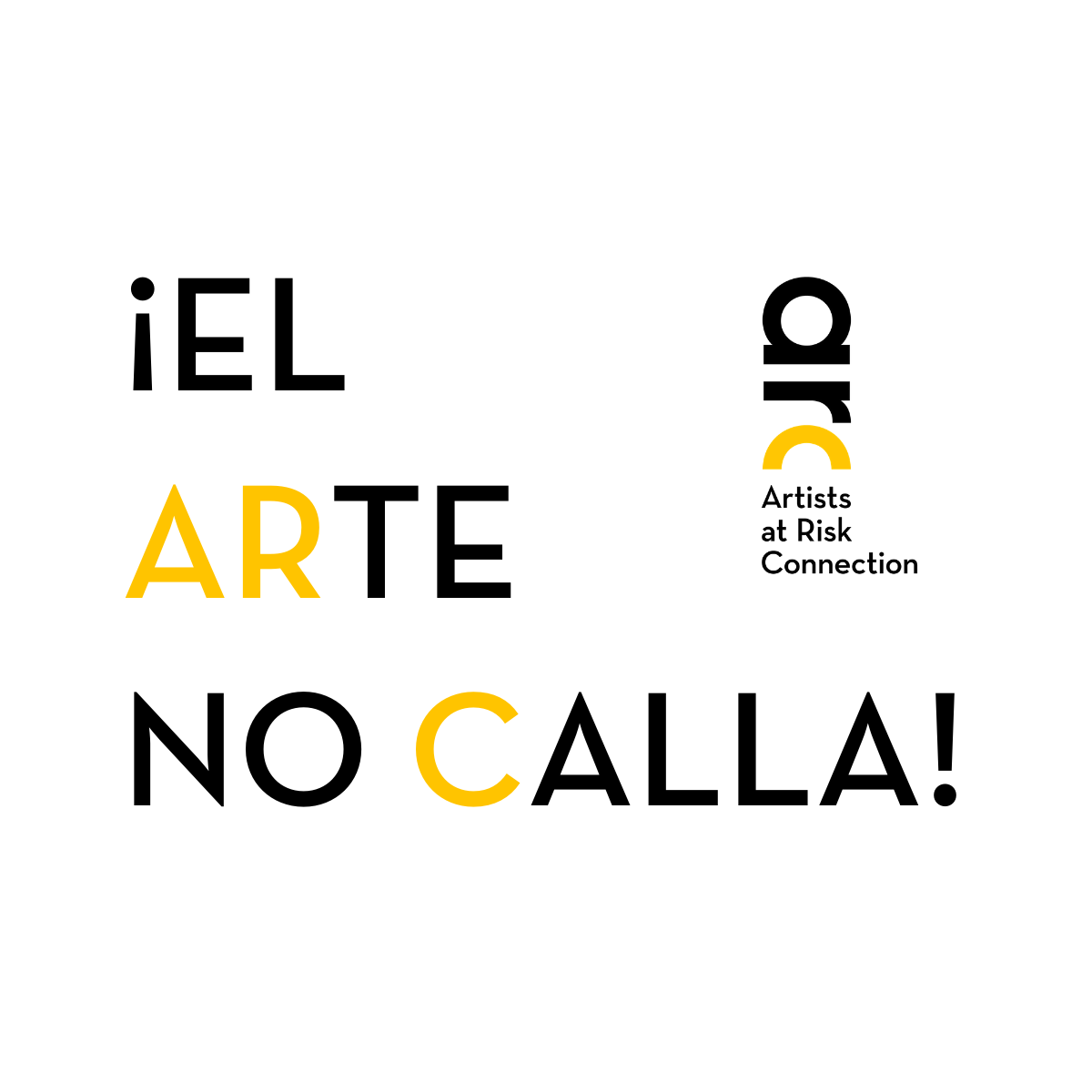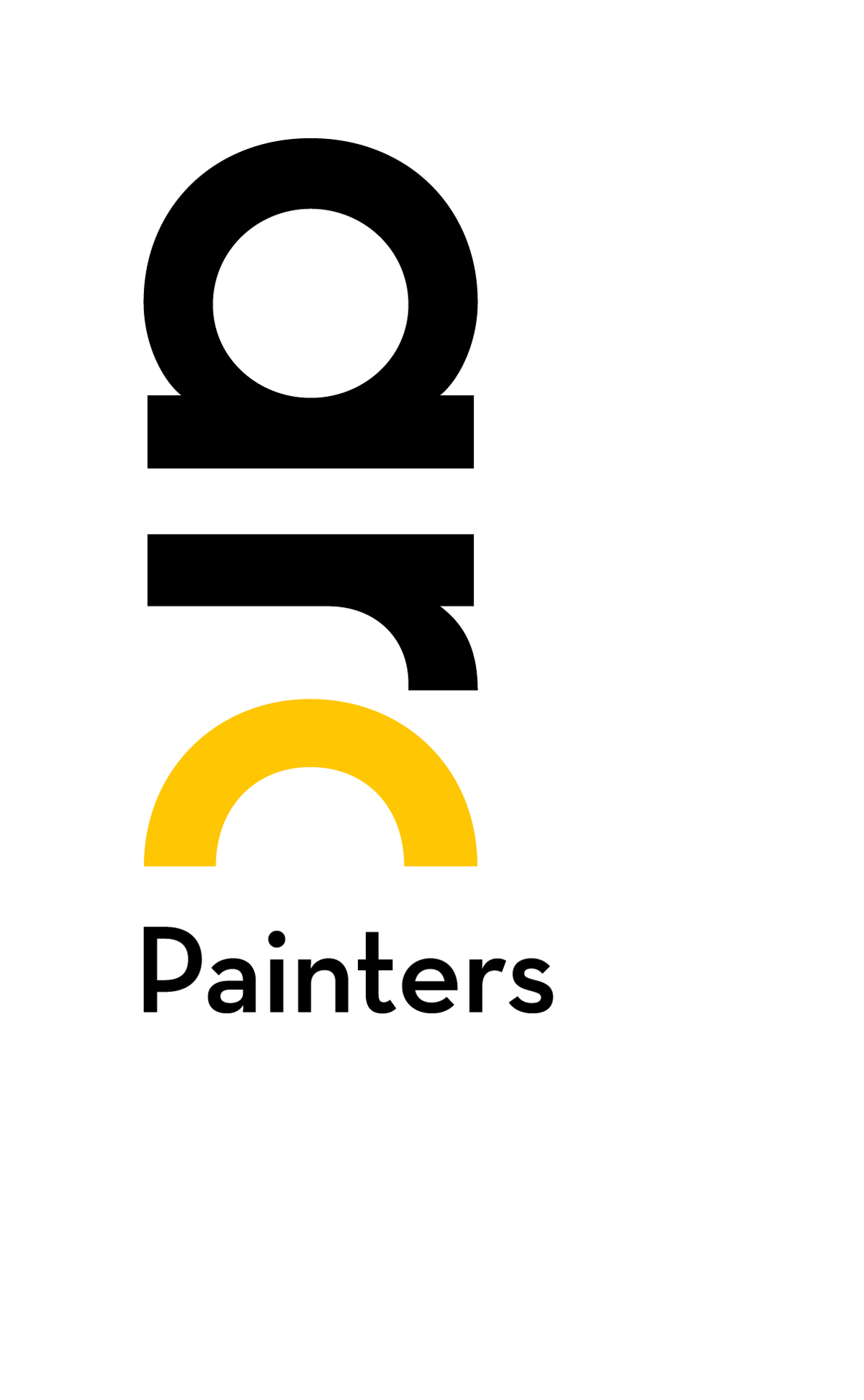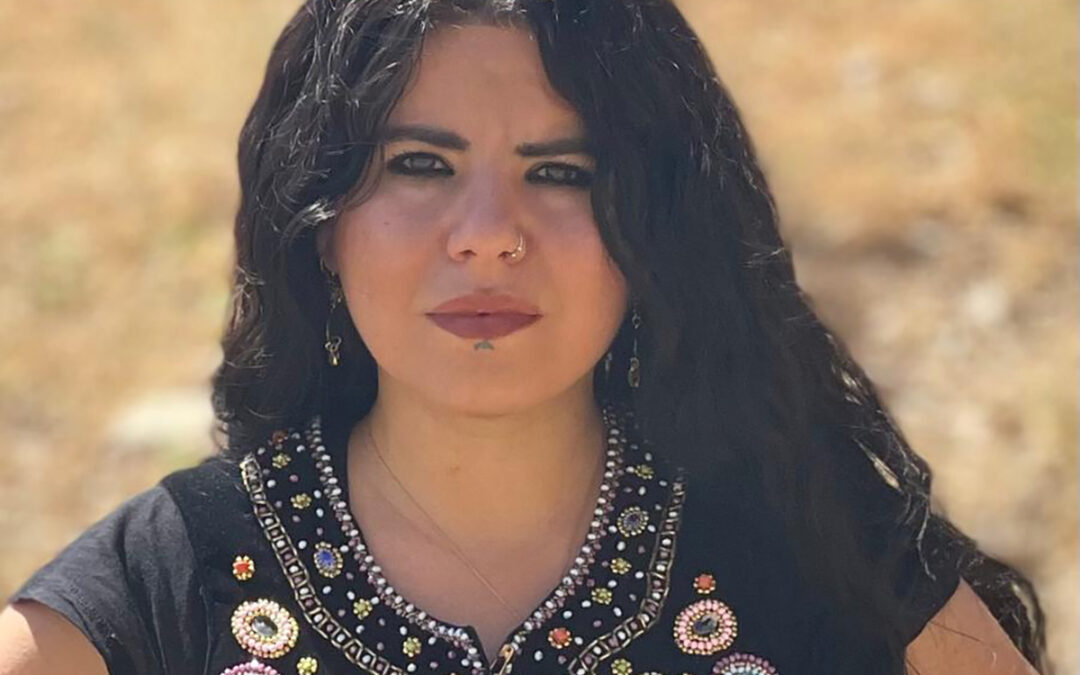Zehra Doğan
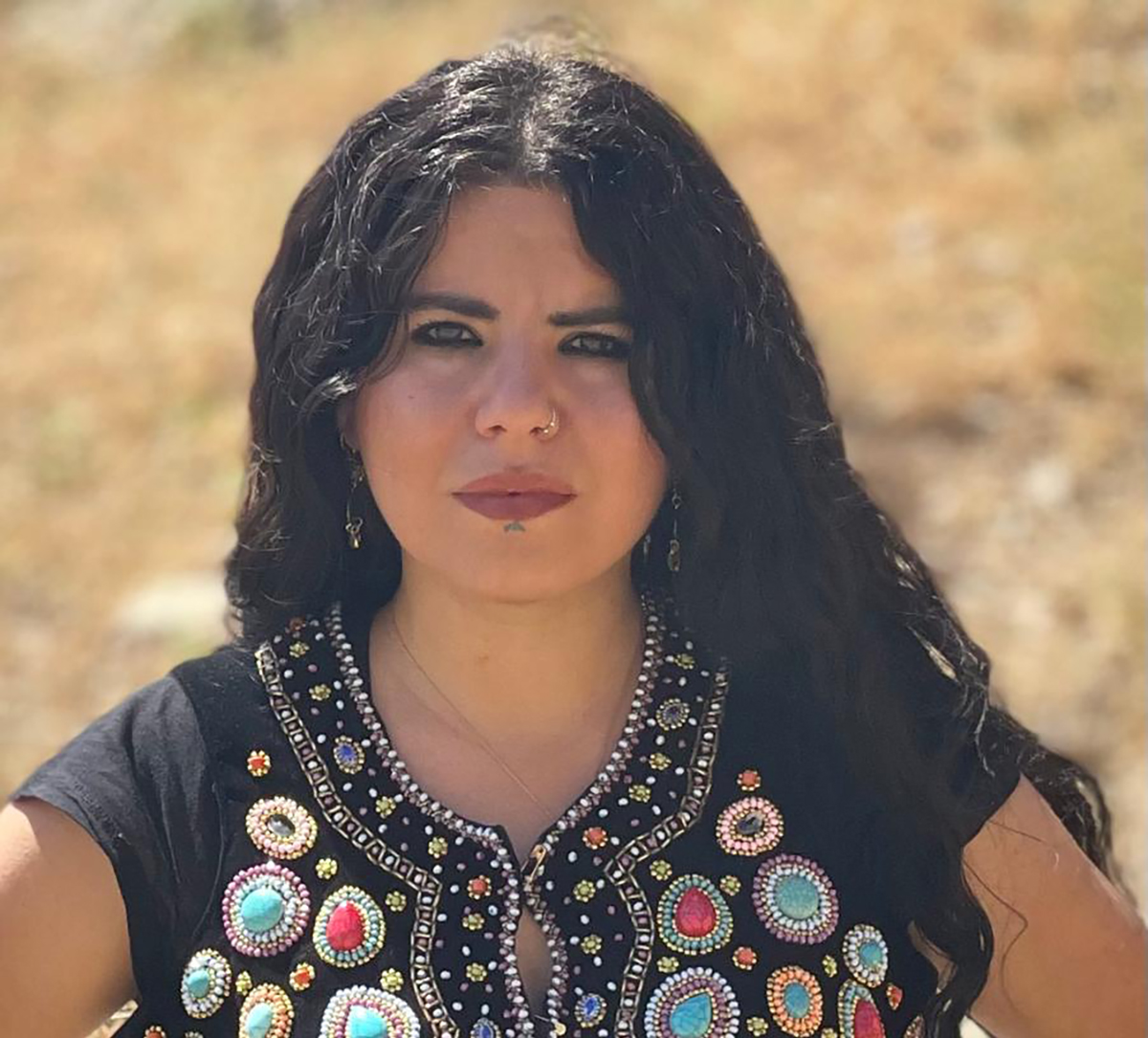
Zehra Doğan, journalist, activist, and artist, is a passionate defender of women’s rights and opponent of Turkish oppression of their Kurdish citizens. Her work at Jinha, a Feminist Kurdish news agency, as an independent journalist, has garnered acclaim. In 2015, she received the Metin Göktepe Journalism Award for her series of articles about Yazidi women escaping from ISIS captivity. In addition, her work as an artist has received similar acclaim. While the range of her work is diverse, she often depicts colorful, flowing scenes of Kurdish women and traditional Kurdish life, as well as dark, striking images of war, conflict and other political scenes. This attention, however, has come at a price.
“I was given two years and 10 months [jail time] only because I painted Turkish flags on destroyed buildings. However, they [Turkish government] caused this. I only painted it.”
It began with a painting. For a period of five months, her city of Nusaybin instituted a strict curfew that confined Zehra to her home for long periods. She turned to her art to pass the hours. she painted scenes of Kurdistan, its people and the hardships they faced, in an effort to capture the lives of those she knew and interviewed across Nusaybin.
One day she came across a photo posted by a pro-Turkish military twitter account celebrating victory over the PKK.
A military convoy stands at in the foreground surrounded by the battered cityscape of Nusaybin, Turkish flags draped from crumbling buildings. Looking at this photo, Zehra didn’t think of victory, only the dead, and the broken lives each shelled building represented.
She painted the scene depicted in the photo, but reshaped it to show the truth of what she saw. Upon its publication and circulation on social media, it was found by Turkish authorities. The Turkish judiciary saw this painting as an act of terrorist propaganda.
On July 21, 2016, Zehra was arrested in a cafe in Nusaybi. Her artistic work of protest was deemed by the Turkish state to be an act of terrorism. The state argued:
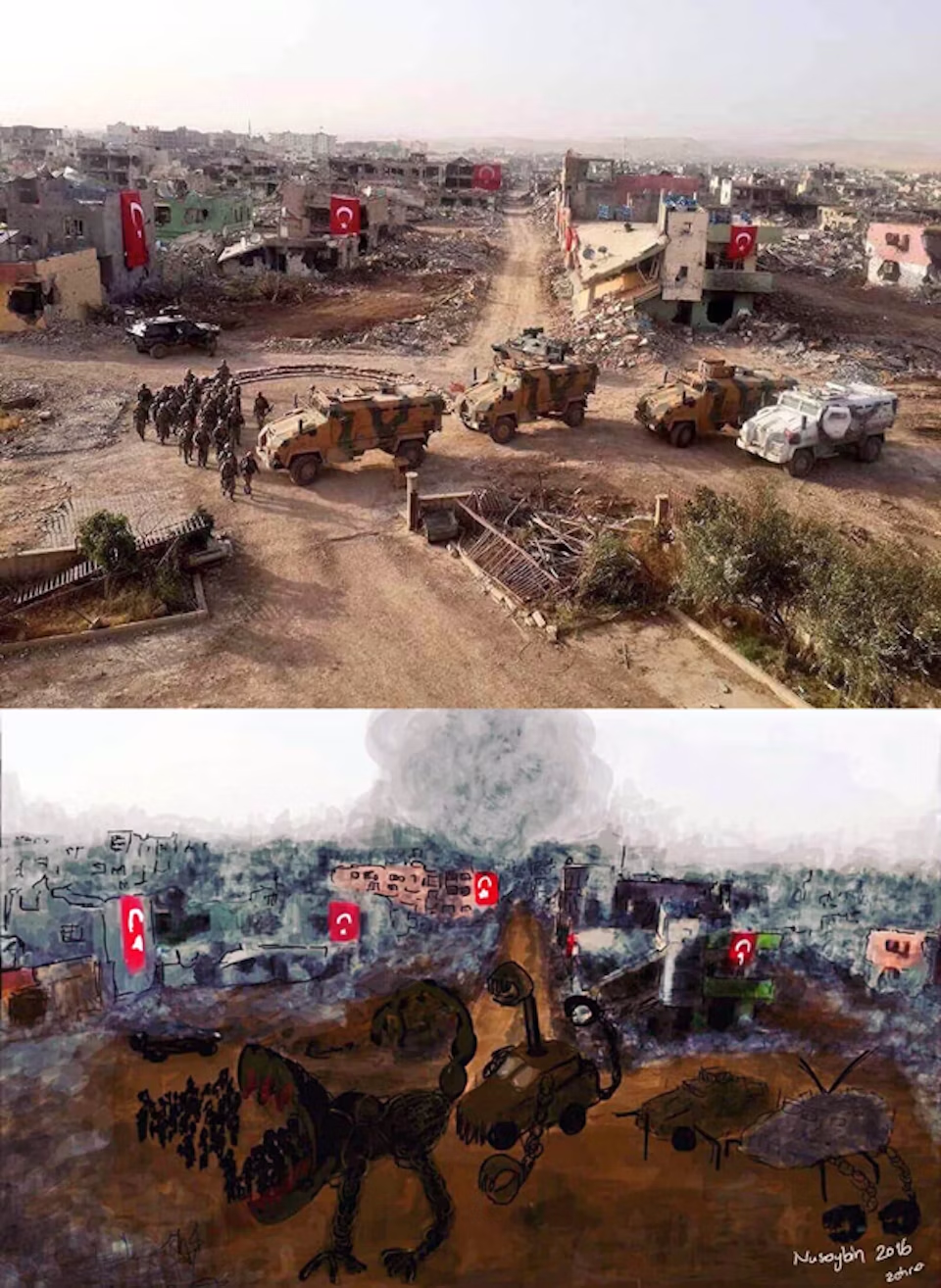
“The defendant photographed a scene in Nusaybin and painted Turkish flags on destroyed buildings. It is very clear that this painting is against the operations that were conducted as a result of the PKK terrorist organization’s barricade and trench policy, which undoubtedly includes violence and force.
This painting is beyond the limit of criticism of the operations done by the security forces in order to restore public order and it is propaganda for the PKK’s barricade and trench policy.”
The state’s reaction to her work is unprecedented. Not only did she not take the photograph posted on a pro-Turkish military twitter account, but the flags can clearly be seen in the original photo. On March 24, 2017, the Second High Criminal Court of Mardin province charged Doğan with having connections to the Kurdistan Workers’ Party (PKK) and sentenced her to 2 years, 9 months and 22 days in prison.
Since her imprisonment, Zehra has refused to bend to the state’s will or cease her work as a journalist. In prison she founded the newspaper Özgür Gündem Zindan (Free Agenda Dungeon) with the help of several of her fellow inmates. However, prison authorities are not allowing her use of painting materials and have said that the prison guidelines regarding this are non-negotiable. They have also refused any statements or letters that aren’t penned in Turkish. A number of organizations are heading a campaign calling for her release and demanding that she be allowed to practice her art while imprisoned.
UPDATE on March 27, 2019: In honor of Zehra’s nomination for Index on Censorship‘s 2019 Freedom of Expression Awards, the organization released a video highlighting her artwork and commitment to defending artistic freedom.
UPDATE on February 24, 2019: Kurdish journalist and artist Zehra Doğan was released from a Turkish prison after spending nearly 600 days in jail for a painting the Turkish government deemed “terrorist propaganda.” Speaking after her release, Doğan said she was happy to be free but also upset for the hunger strikers still behind bars, Ahval reported. There are over 300 Kurdish political prisoners who are involved in an indefinite hunger strike in a protest led by pro-Kurdish MP Leyla Güven – that has almost reached to its fourth month. The protests aim to end the policy of isolation and the release of Abdullah Öcalan, the jailed leader of the PKK which has waged a decades-long insurgency in Turkey.
UPDATE on February 10, 2019: Zehra Doğan’s exhibition, “Not Approved” opened on October 9, 2021 at Kiraathane24 gallery in Istanbal’s Pera district. The show champions Kurdish feminism, and comprises of artwork created with clothing and other materials Doğan snuck out of the different prisons she served time in.
UPDATE on January 30, 2019: Turkish media site Bianet has released new images of Zehra’s recent artwork, created during her detainment in Tarsus Prison. Deprived of traditional art supplies, Zehra has used any materials she can get a hold of to continue her work, including plant roots and menstrual blood.
UPDATE on October 26, 2018: Zehra was suddenly moved, with 19 others, to Tarsus prison. The prison is known for its violence towards and abuse of prisoners. This also restricts Zehra’s family’s ability to visit her.
UPDATE on July 18th, 2018: In a thank-you letter to Banksy, Zehra called his mural protesting her arrest “the best reply to the crooked regime that can’t even tolerate a painting.” She added that “with your support, my painting now accomplished its mission of showing the atrocities.”
UPDATE on March 16th, 2018: World-famous graffiti artist Banksy, together with fellow graffiti artist Borf, has painted a mural in New York City in support of Zehra! See the mural below, with Zehra’s art projected above it.
By Ben Ballard, August 2017.



